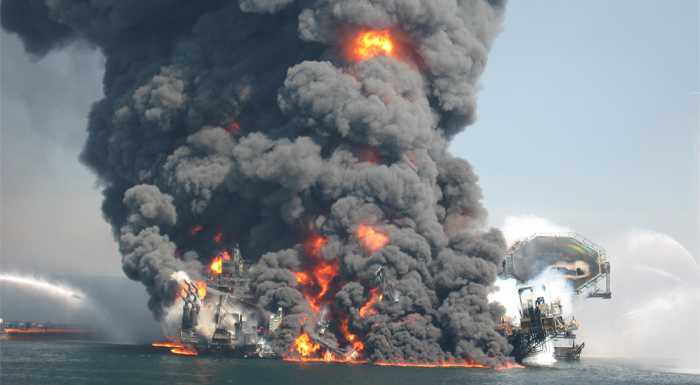
In onshore and offshore oil and gas facilities many potentially dangerous fuels, such as hydrocarbons, are handled. These fuels not only produce accidental fire outbreaks, but also explosions. Although the occurrence of such incidents are rare, the consequences can be severely damaging to the building, personnel and even public safety. Therefore, petrochemical facilities and offshore platforms are designed to minimize such incidents.
In the past, a number of explosions have taken place at oil and gas facilities. Strict standards have been developed over the years for blast resistant design and are still of importance in present times. On the 1st of December 2016 a huge fire explosion occurred at one of the biggest oil refineries in Italy, in the south of Milan, of which the consequences to public health are still begin assessed. Another notable explosion event occurred on the Deepwater Horizon in the Gulf of Mexico in 2010. The explosion and subsequent fire resulted in the sinking of the Deepwater Horizon and the deaths of 11 workers; 17 others were injured. The same blowout that caused the explosion also caused a massive offshore oil spill in the Gulf of Mexico, considered the largest accidental marine oil spill in the world, and the largest environmental disaster in U.S. history. Such examples once again emphasize the need for designing structures to withstand explosions in order to protect people.
According to the ASCE standard, which provides guidance in blast resistant design, the primary objectives for providing blast resistant design for buildings are:
- Personnel safety;
- Controlled shutdown:
- Financial consideration.
Personnel safety
Just like fire resistant design, blast resistant design should in any event provide safety for the people inside the structure. Past incidents have shown that many deaths or injuries were caused by the collapse of the building onto people inside the facility. Architectural design should therefore stay intact and operable during severe events.
Controlled shutdown
Explosions or fires should not result in the closure of the entire operation of the facility. An incident in one area or unit should not affect the operations in other units. By assessing the potential risk of each unit separately one can apply blast resistant product such as walls, doors and windows to each area specifically. This is also known as compartmentalization and is very important in securing the safety of people within oil & gas production facilities. This type of design also allows for proper and safe evacuation when necessary.
Financial consideration
Explosions also pose danger to material and critical or essential equipment. Therefore, the final objective for blast resistant design is preventing or minimizing financial losses. The project owner should therefore always be aware of the potential risks, the structure is facing and whether these risks can be mitigated by blast resistant design.
Blast resistant design can vary considerable in complexity, accuracy, cost and efficiency. During the design phase of the structure it is of key importance to address all these aspects of blast design and finalize the project accordingly. A good structural design protects equipment and personnel against a blast and fire event.
Fire and blast resistant products are integral in the overall design of a blast resistant structure. Download our eBook Blast ratings for fire protective products for more information and insights.







